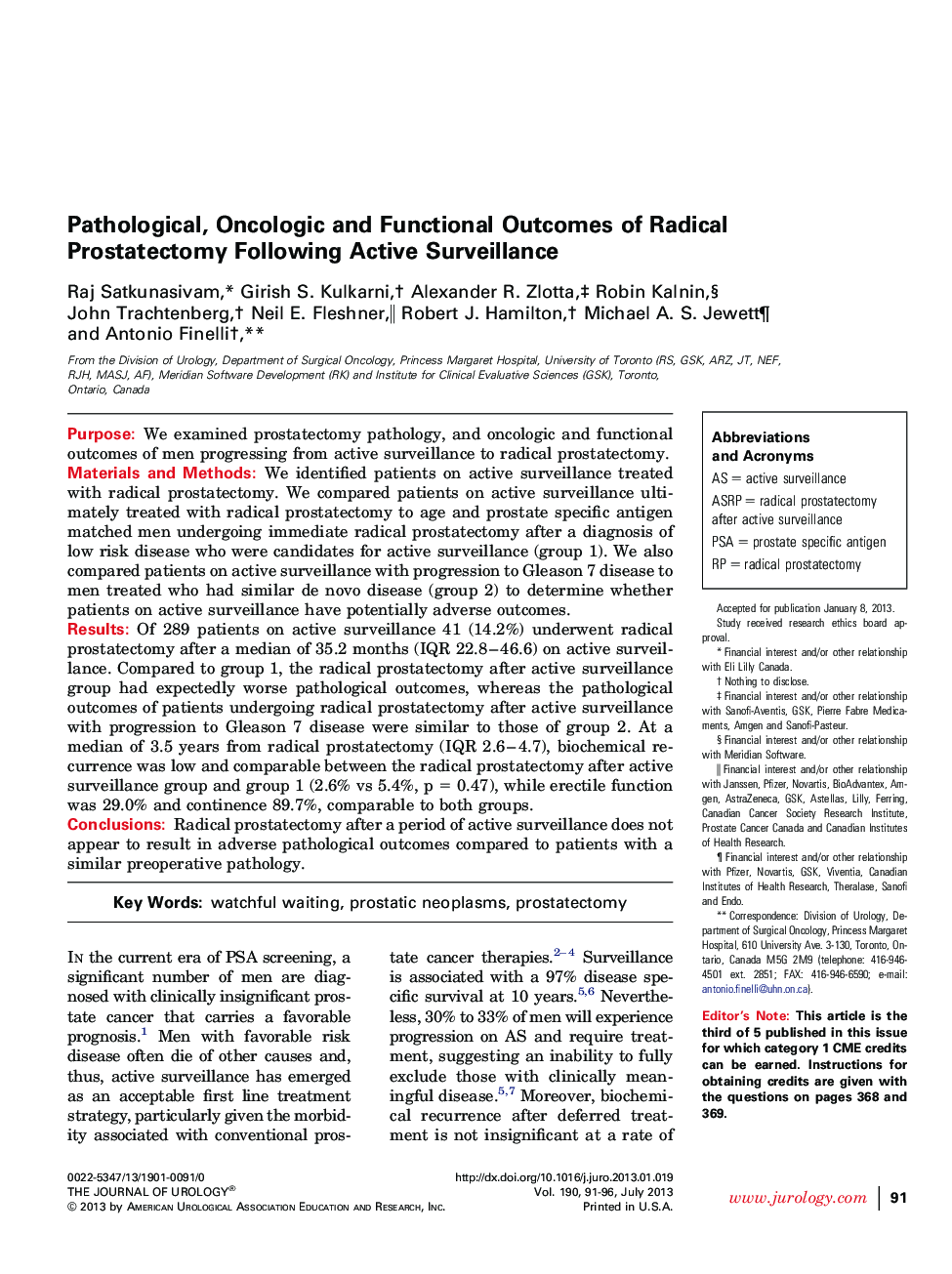| Article ID | Journal | Published Year | Pages | File Type |
|---|---|---|---|---|
| 3866238 | The Journal of Urology | 2013 | 6 Pages |
PurposeWe examined prostatectomy pathology, and oncologic and functional outcomes of men progressing from active surveillance to radical prostatectomy.Materials and MethodsWe identified patients on active surveillance treated with radical prostatectomy. We compared patients on active surveillance ultimately treated with radical prostatectomy to age and prostate specific antigen matched men undergoing immediate radical prostatectomy after a diagnosis of low risk disease who were candidates for active surveillance (group 1). We also compared patients on active surveillance with progression to Gleason 7 disease to men treated who had similar de novo disease (group 2) to determine whether patients on active surveillance have potentially adverse outcomes.ResultsOf 289 patients on active surveillance 41 (14.2%) underwent radical prostatectomy after a median of 35.2 months (IQR 22.8–46.6) on active surveillance. Compared to group 1, the radical prostatectomy after active surveillance group had expectedly worse pathological outcomes, whereas the pathological outcomes of patients undergoing radical prostatectomy after active surveillance with progression to Gleason 7 disease were similar to those of group 2. At a median of 3.5 years from radical prostatectomy (IQR 2.6–4.7), biochemical recurrence was low and comparable between the radical prostatectomy after active surveillance group and group 1 (2.6% vs 5.4%, p = 0.47), while erectile function was 29.0% and continence 89.7%, comparable to both groups.ConclusionsRadical prostatectomy after a period of active surveillance does not appear to result in adverse pathological outcomes compared to patients with a similar preoperative pathology.
